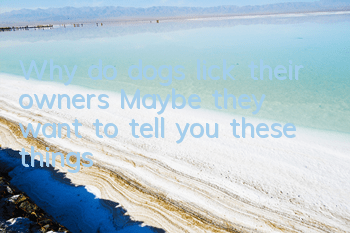How to feed Pug dogs:
The food fed to Pug dogs, such as meat (beef, chicken, fish), must be fresh. Among them, fish should have its bones removed (dogs are different from cats, fish bones can easily damage the mouth and throat and cause vomiting). In addition to meat, you should also feed vegetarian foods such as vegetables and cooked beans or biscuits with no or less sugar. The meat fed to Pug dogs should be boiled in a small amount of water for 10 to 20 minutes and then chopped into pieces before feeding. The reason why meat must be cooked is to increase the flavor and stimulate appetite; and to kill bacteria and parasites in the meat to prevent illness.
The amount of food can be based on the weight of the pug, with 180 to 220 grams being appropriate. Overfeeding is not allowed, otherwise it will gain weight and lose its cute image. Because Pug is born a fat dog, you should try to control the food he likes to eat. Otherwise, once the dog becomes particularly fat, although it looks good-looking and cute, it can easily cause heart disease! Generally 2 Puppies aged ~3 months old are fed 4~5 times a day, puppies aged 4~8 months old are fed 3 times a day, and dogs aged 8 months and above are fed 2 meals of staple food. Some adult dogs are full after just one meal.
Deworming
There are no rules for deworming drugs and time. The most commonly used drug is levamisole. Generally, it is dewormed once after 20 days after the puppy is born, and then for three consecutive days after 30-35 days, and again before 60 days. At present, the following deworming procedures are commonly adopted in the UK, the Netherlands and Hong Kong: first deworming 2 weeks after birth, deworming every 2 weeks from 2 to 8 weeks of age, and monthly deworming from 2 to 6 months old. Deworm once; deworm once every three months after 6 months of age. For dogs that cannot be determined whether to be dewormed at 6 months of age, deworming should generally be repeated after the first deworming, and then again every three months.
Adult dogs should be dewormed every three months. The interval can be appropriately lengthened depending on the situation. Levamisole is used to deworm roundworms, arsequinone is used to deworm tapeworms, and metronidazole is used to deworm trichomonas. Different parasites Different anthelmintic drugs should be used to treat worms. Generally, if there are more parasites, certain parasite types can be seen in the dog’s feces. However, trichomonas and coccidia need to be confirmed through microscopic examination, so deworming must be Prescribe the right medicine.
Vaccine
The immunity of puppies is very important. Generally, the puppy is given a two-shot vaccine when it is 28 days old or a multi-shot vaccine is given when it is 45-60 days old. After that, the second and third shots are given every 25-30 days. Multiple vaccine injection. Another way is to give the first dose of multi-linked vaccine on the 50th to 60th day after the puppy is born, the second dose of the multilinked vaccine on the 80th to 90th day of life, and the third dose on the sixth month. Three-shot multiple vaccine injection. The vaccine should not be injected too early.Otherwise, it will interfere with the maternal immunity of the puppies (except for the two-part vaccine). Two vaccine injections with an interval of less than 15 days will cause excessive amounts of viruses to accumulate in the puppies, causing serious consequences. Adult dogs should be vaccinated once a year, and for dog farms with relatively high breeding density, they should be vaccinated every six months.
Character:
The Pug has a stable, gentle, lively and playful personality. His favorite thing is to play with children. It is also very protective of its owner and will bark fiercely if a stranger approaches.
Sports:
Because Pug dogs are lively and playful, they must be given a certain amount of time for activities every day, but they do not require too much outdoor activities. In addition, this dog's respiratory tract is particularly short and it is not suitable for strenuous exercise (shortness of breath may cause hypoxia), and it is best to take it out for a walk in the morning and evening.
Cleaning:
The Pug is a considerate and cute small dog that does not require exercise and regular grooming of its back hair. At the same time, this dog has an excellent and clean personality. These characteristics have become the reason why it is so popular. In addition, although the pug is a short-haired dog, it must be wiped first and then blown after taking a bath, otherwise it is easy to suffer from skin diseases. Don't bathe it often, just twice a month.
Adaptability:
Pug is intolerant of heat. They are relatively sensitive to high temperatures. When the temperature is high, especially in mid-summer, they should avoid going out and instead keep them in a shady place with plenty of drinking water.
Notes:
1. During the development stage of Pug dogs, sufficient protein, fat, sugar, minerals and vitamins must be provided. Cooked eggs are the best source of protein for pugs. It is best to buy specialized milk, otherwise the milk consumed by ordinary people can easily cause diarrhea and vomiting in puppies.
2. It is not advisable to let dogs do strenuous exercise before or after meals, otherwise it will affect digestion.
3. The salt content in food should be controlled carefully. It should not be too salty (about 1.4%), otherwise it will cause easy hair loss and increase the burden on the organs. Because dogs are extremely sensitive to sodium (Na), giving 3.7 grams of salt (NaCl) per kilogram of body weight can cause death!
4. Human ingredients, as well as spicy foods such as onions and peppers, are not suitable for feeding. Chocolate should not be eaten by dogs by accident, because dogs cannot excrete theobromine and caffeine, which may lead to poisoning: such as Rapid heartbeat, extreme excitement, convulsions, elevated body temperature, etc. In severe cases, it can affect the central nervous system and lead to heart failure and death.








